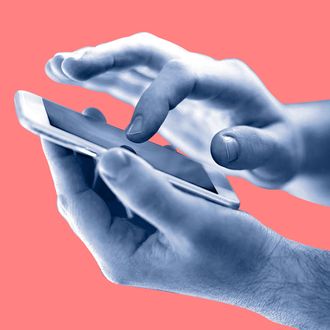
You can discover a huge amount of information about someone’s life by getting hold of their personal data — Facebook and Twitter follows and Google searches are all revealing in their own ways. The same goes for cell-phone data, of course, and a new study shows that analyzing someone’s cell-phone usage patterns might allow an observer to determine — or at least guess with a pretty high degree of accuracy — whether they’ve recently lost their job.
Writing in the Journal of the Royal Society Interface, a team led by Jameson Toole of MIT examined this from a few different angles. First, they focused on an auto-parts plant in Europe that was closed in 2006 and was situated near three cell-phone towers that allowed them to scoop a bunch of cell-phone data that included all of the calls made by employees at the plant.
At the individual level, “Users highly suspected of being laid off demonstrate a sharp decline in the number of days they make calls near the plant following the reported closure date.” The researchers couldn’t prove these folks were laid off, but by comparing what they were seeing to what happened during a holiday when the plant was closed, they think they have “strong evidence that we are correctly identifying the portion of users who were laid off by this closure.”
The researchers also used cell-phone data to track how people’s behavior — or at least those signals of behavior captured by cell-phone use — changed after losing their job. Some of the findings were stark:
We find that the total number of calls made by laid off individuals drops 51% and 41% following the layoff when compared to non-laid off residents and random users, respectively. Moreover, this drop is asymmetric. The number of outgoing calls decreases by 54% percent compared to a 41% drop in incoming calls (using non-laid off residents as a baseline). Similarly, the number of unique contacts called in months following the closure is significantly lower for users likely to have been laid off. The fraction of calls made by a user to someone physically located in the town drops 4.7 percentage points for laid off users compared to residents of the town who were not laid off. Finally, we find that the month-to-month churn of a laid off person’s social network increases roughly 3.6 percentage points relative to control groups. These results suggest that a user’s social interactions see significant decline and that their networks become less stable following job loss. This loss of social connections may amplify the negative consequences associated with job loss observed in other studies.
Finally, the researchers showed that, by collecting cell-phone data at the individual level, they were able to zoom out and partially predict unemployment at the province level. In other words, if you notice that there’s a sudden uptick in the people in one area whose call records reflect the above excerpt, you can be pretty sure unemployment is rising in that area.
The privacy concerns here speak for themselves — it seems like most of us just don’t understand how much we are broadcasting about our lives every day.




